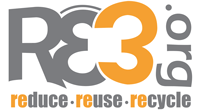During my visit to New South Wales, Australia, I saw that water conservation is a top priority for Australians. They are wise to be water conscious because Australia is one of the driest continents in the world. My husband’s cousin, who lives a couple hours outside Sydney, could recall when his area went four months without rain.
My husband’s grandmother’s house where we stayed three weeks is not hooked up to city water. Instead, her water comes straight from the sky. Rain water collects in the three large cisterns right next to her house. You can see the two teal-colored cisterns and the concrete cistern in the pictures below. All of her drinking, cooking, washing and irrigation water comes from these cisterns. The rain water runs through a filter before coming into the house, but still, the water consumed by my husband, son and I was boiled because we are used to treated city water.
Between 40 and 50 years ago when this property was a working farm, the six-person family had only two small cisterns, so water had to be strictly conserved. Once the water in the cisterns was used up, the family had no more water until it rained again. One way the family conserved was by limiting water use at bath time. One bathtub of hot soapy water was filled. The youngest bathed first, then, using the same bath water, the next child bathed. The dirtiest family member, usually the one who had done the dirtiest work on the farm that day, would go last. Only one pitcher of fresh water was added to each subsequent bath. This conservation practice was still being used when my husband visited his family when he was 13-years-old. Conserving water at bath time is very important considering a 15-minute shower at five gallons per minute could easily use up 75 gallons of water.
Once the three larger cisterns were installed, the family could relax their water conservation efforts slightly. During my stay, we still made sure to take short showers and turn off the water while soaping up. One water conservation technique the family still uses is in the area of dishwashing. This form of conservation was difficult for me to get used to. After a meal, one sink of hot soapy water was filled up. All of the dishes from the twelve of us were scrubbed with this water. Then, instead of the dishes being rinsed, the soap was wiped off with a dish towel.
You can see how much of the yard is taken up by these three cisterns.



This rain water cistern is in the backyard of my husband’s great aunt whose house is right in the middle of a suburb. Every house I visited had at least a small rain water barrel to water the garden.

Even large chain stores collect and reuse rain water.

As the global population increases, we need to be wiser with our water usage. Our country could benefit by adopting some of Australia’s water conservation practices. We could start by making rain barrels and cisterns a more common sight in American backyards.

No comments:
Post a Comment